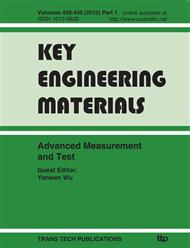p.1306
p.1312
p.1318
p.1324
p.1328
p.1337
p.1343
p.1349
p.1355
Study on the Integrated Modeling of the Entire Rider-Vehicle-Road System
Abstract:
The demands of high-quality dynamic performance and short development time for vehicle production can only be fulfilled by the application of advanced design, simulation and optimization technologies. Virtual prototyping (VP), the analysis and simulation technology based on a fully developed computer model, represents a future way for cost and time efficient design of vehicles and can perform the same as those on the physical prototyping. This paper describes an integrated modeling method, based on the topological structure of a heavy vehicle and oriented to ride dynamics, of a human-vehicle-road system. A multi-body simulation model was chosen as the integration platform for the virtual prototyping since it provided the flexibility to integrate all relevant aspects such as rigid body movement, road-induced vibration and the driver’s responses to the vibration. The time domain model of the stochastic excitation from the road irregularities was numerically reconstructed as input data to VP and the feeling evaluation model in time domain, equivalent to conditional frequency evaluation, was used to the vehicle’s riding comfort simulation. Through integrating the sub-models in VP and combining the data of the sub-models it became possible to predict dynamic performance of vehicles by virtual prototyping technology.
Info:
Periodical:
Pages:
1328-1336
Citation:
Online since:
June 2010
Authors:
Price:
Сopyright:
© 2010 Trans Tech Publications Ltd. All Rights Reserved
Share:
Citation:


